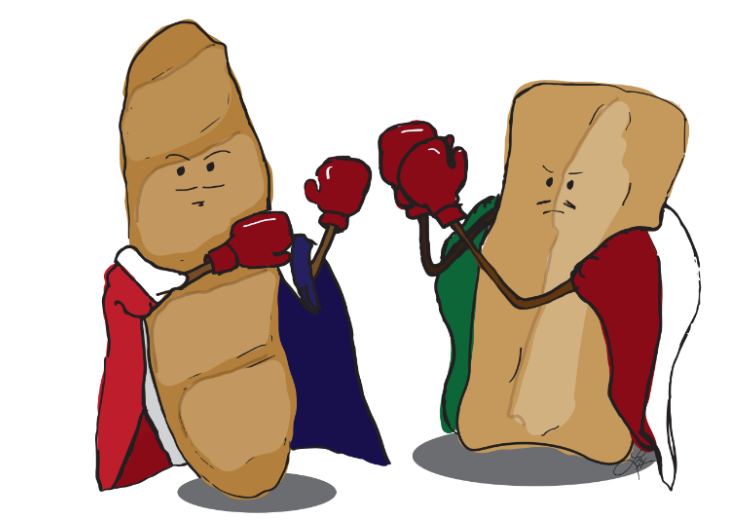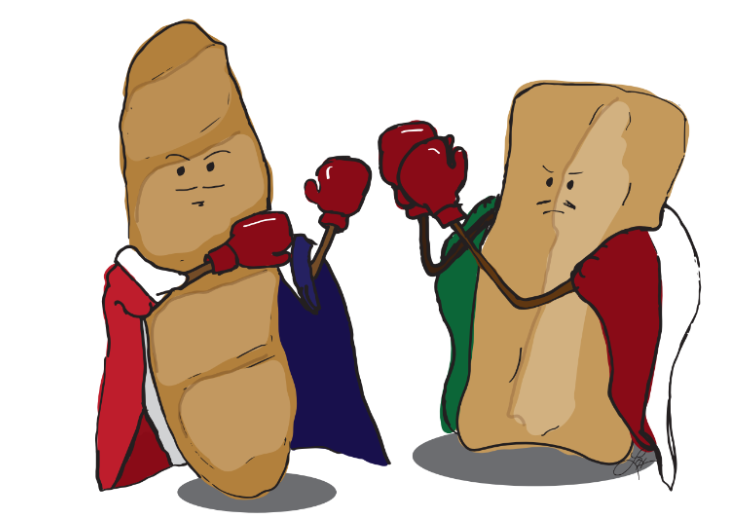
Bread is at the core of mealtimes around the world. Whether it’s charred South Asian roti, rich Jewish challah, or classic American white bread, some form of carbs find a place at most dinner tables. It’s no surprise that such a cheap and filling food has become a global staple, but what is surprising is bread’s culturally competitive nature, particularly in Western Europe.
Between the 1950s and 1970s, the French and Italian economies were doing well. Post-war Europe was torn but quickly rebuilding, with high productivity rates and government investments in key infrastructure and labor sectors. Accompanying this positive growth was the rapid popularization of a uniquely French loaf – the baguette. By French law, a baguette, or “stick”, only uses four ingredients (yeast, flour, salt, and water), yielding a crispy yet soft product, ideal for sandwiches, or for having with soups, coffee, and midday snacks. The simplicity and low cost of baguettes threatened other European bakers, particularly those in Italy, who prided themselves on their traditional bread recipes. How could they overcome the French threat and produce a carb competitor in the market? The answer was ciabatta.
These days, chewy ciabatta is synonymous with Italy, with many assuming the crusty bread has been a part of the region’s history for a while. However, the humble loaf was first developed in the early 1980s by Arnaldo Cavallari, a baker who lived near Venice and vowed to dethrone the baguette. His dough had a much higher moisture content and slower proofing process than its Franc kin, making the product crustier, chewier, and more aerated. Ciabatta’s success was immediate. In 1985, the bread became mass-produced in the U.K. and the U.S., a new hallmark of “Italian” cuisine abroad.
The novelty and quick popularity could not have come at a better time for the Italian economy, which was experiencing market stagnation and high inflation rates for the first time in decades. Cavallari’s vision of a versatile Italian bread that showcased the country’s baking prowess and combatted the French baguette in European markets had been realized. Ciabatta helped distinguish Italian culture from its northern and western European cousins, solidifying the region’s distinct international identity and promoting interest in Italy abroad.


